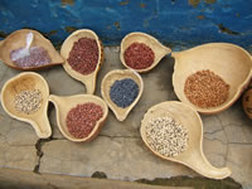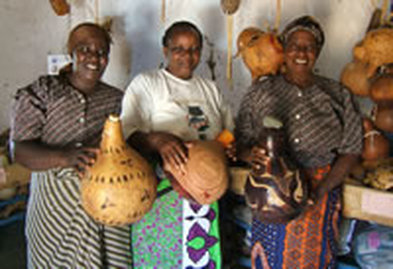History of Gourds Around the World
|
History of Gourds in North America
Transoceanic drift and the domestication of African bottle gourds in the Americas Significance: Bottle gourd, one of the most cross-culturally ubiquitous crops, had a pan-tropical distribution by the beginning of the Holocene. Our findings overturn a major component of the current model for bottle gourd’s early global dispersal, specifically regarding how it entered the Americas. Our findings also indicate that the domestication process itself took place in a diffuse pattern throughout the bottle gourd’s New World range, explaining early and nearly contemporaneous use of bottle gourds in North, Central, and South America. Bottle gourd’s weedy growth habit and the diffuse domestication pattern also suggest that early cultivation were probably not restricted to known centers of domestication. It is likely, however, that domesticated phenotypes emerged in these centers alongside food crops.Read more ... Or, go to: www.pnas.org/doi/10.1073/pnas.1318678111 A Little History of Gourd Societies in the United States
In 1937 the "Gourd Society of America" was founded by Mr. Sterling Pool of Rockport, Massachusetts. In 1970 the society was moved to Ohio and renamed The American Gourd Society. Today, AGS has over 2,000 members and acts as the unifying body for 22 state chapters. States chapters are chartered in Alabama, Arizona, California, Florida, Hawaii, Georgia, Idaho, Indiana, Iowa, Michigan, Mississippi, Missouri, Nevada, New Mexico, North Carolina, Ohio, Pennsylvania, South Carolina, Texas, Virginia and Washington State. North Carolina was the first chartered Chapter (1943), while the California Chapter, which was chartered in 1997 is one of the largest Chapters in the Society. |
Saving the Bottle Gourd in Kenya
The Gourd Museum in Kitui district, eastern Kenya is an unlikely looking genebank. Five years ago, this small, tin-roofed building in the village of Kyanika was a disused shed; now it houses the most important collection of gourd germplasm in Africa, and probably the world. A project of the Kyanika Adult Women's Group, in partnership with two national organizations* and the International Plant Genetic Resources Institute (IPGRI), the museum is part gene bank, part training and education center, and home to a substantial library of gourd related information. But to the average visitor, it is the gourds themselves that are most remarkable. Read more… |
Want to read more?...Check out these files:
- The Gourd: The Most Important Plant in All of Human History, Raymond Konan
- The Gourd Mound, Mark Thompson



